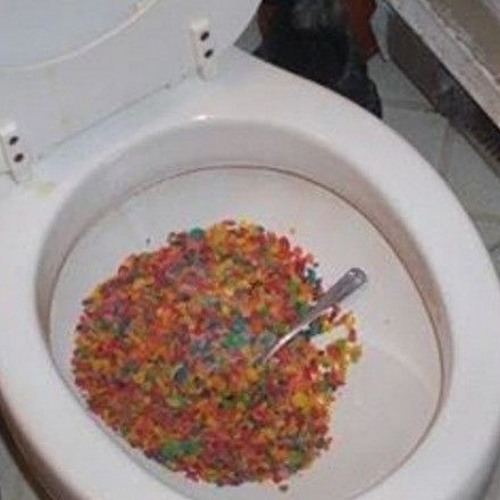Is it Safe to Flush Food in the Toilet?
Is it Safe to Flush Food in the Toilet?
Blog Article
What are your thoughts and feelings about Is it safe to flush food (especially rice) down the toilet??

Intro
Many individuals are commonly faced with the predicament of what to do with food waste, specifically when it comes to leftovers or scraps. One typical question that emerges is whether it's all right to flush food down the toilet. In this article, we'll look into the reasons people could think about purging food, the repercussions of doing so, and alternative approaches for proper disposal.
Reasons that individuals might think about flushing food
Lack of understanding
Some people might not be aware of the prospective damage caused by flushing food down the bathroom. They may erroneously believe that it's a harmless method.
Ease
Purging food down the commode might seem like a fast and simple option to disposing of undesirable scraps, specifically when there's no close-by trash can available.
Idleness
Sometimes, individuals might simply choose to flush food out of sheer laziness, without taking into consideration the effects of their activities.
Effects of flushing food down the commode
Ecological influence
Food waste that ends up in rivers can contribute to contamination and injury aquatic environments. In addition, the water used to flush food can strain water resources.
Plumbing issues
Flushing food can result in stopped up pipelines and drains, triggering costly plumbing repairs and hassles.
Kinds of food that must not be flushed
Fibrous foods
Foods with coarse appearances such as celery or corn husks can get entangled in pipelines and cause obstructions.
Starchy foods
Starchy foods like pasta and rice can soak up water and swell, bring about obstructions in pipelines.
Oils and fats
Greasy foods like bacon or cooking oils should never be flushed down the commode as they can solidify and cause clogs.
Proper disposal techniques for food waste
Making use of a waste disposal unit
For homes equipped with waste disposal unit, food scraps can be ground up and purged through the plumbing system. Nonetheless, not all foods are suitable for disposal in this fashion.
Recycling
Specific food packaging materials can be recycled, decreasing waste and decreasing environmental influence.
Composting
Composting is an environment-friendly means to take care of food waste. Organic products can be composted and used to enhance dirt for horticulture.
The relevance of correct waste monitoring
Lowering ecological injury
Appropriate waste management methods, such as composting and recycling, help minimize contamination and protect natural resources for future generations.
Shielding plumbing systems
By avoiding the method of flushing food down the bathroom, homeowners can stop costly pipes fixings and maintain the stability of their plumbing systems.
Final thought
Finally, while it may be appealing to purge food down the bathroom for convenience, it is necessary to recognize the possible effects of this activity. By adopting correct waste monitoring methods and getting rid of food waste responsibly, people can contribute to much healthier pipes systems and a cleaner setting for all.
FLUSH FOOD DOWN THE TOILET?
FLUSHING FOOD CAN CAUSE BLOCKED DRAINS IN YOUR HOME
All of the plumbing fixtures in your home are connected to the same sewer pipe outside of your home. This outdoor sewer pipe is responsible for transporting all the wastewater from your home to the Council sewer mains. Even small pieces of food that go down the kitchen sink can cause problems for your sewer. It should therefore be obvious that flushing larger bits of food, such as meat, risks a clog in either the toilet itself or the sewer pipes. Flushing greasy food is even more problematic because oil coagulates when it cools, coating the interior lining of your pipes.
THE TOILET IS NOT A BIN
Food isn’t the only thing that people shouldn’t be flushing down the toilet. People use the toilet to dispose of all kinds of things such as tampons, makeup wipes, dental floss, kitty litter and even underwear. Water goes to great lengths to educate residents about the high costs and stress placed on wastewater treatment systems simply from people flushing the wrong stuff down the toilet. It costs taxpayers millions of dollars each year, and homeowners thousands in blocked drain repairs.
FLUSHING FOOD IS A WASTE OF WATER
Flushing food is a waste of our most precious resource - water. In June this year Level 1 water restrictions were introduced to protect water supply from drought conditions. Much of New South Wales continues to be affected by prolonged drought with recent figures revealing up to 97 per cent of the state remains in drought. Depending on whether you have a single or dual flush toilet, every single flush uses between five and 11 litres of water. In the current climate this is a huge amount of water to be wasting on flushing food that should be placed in the bin (or better yet, the compost).
https://www.jabplumbingsolutions.com.au/blog/can-you-flush-food-down-the-toilet

We are very fascinated by Flushing Food Down the Toilet? and I am assuming you enjoyed reading the new blog posting. So long as you liked our page please do not forget to pass it around. Thank-you for your time spent reading it.
Click Here Report this page